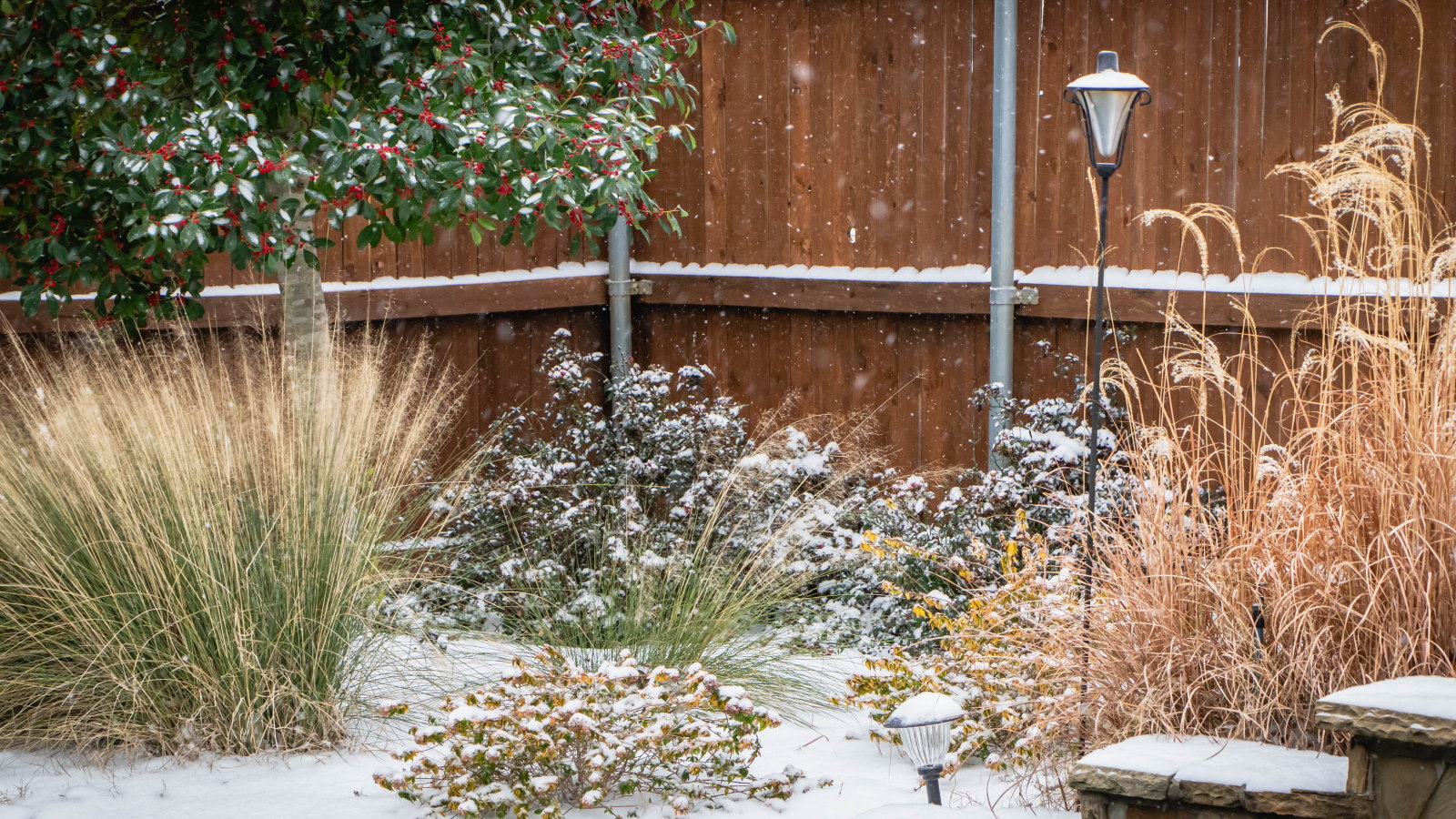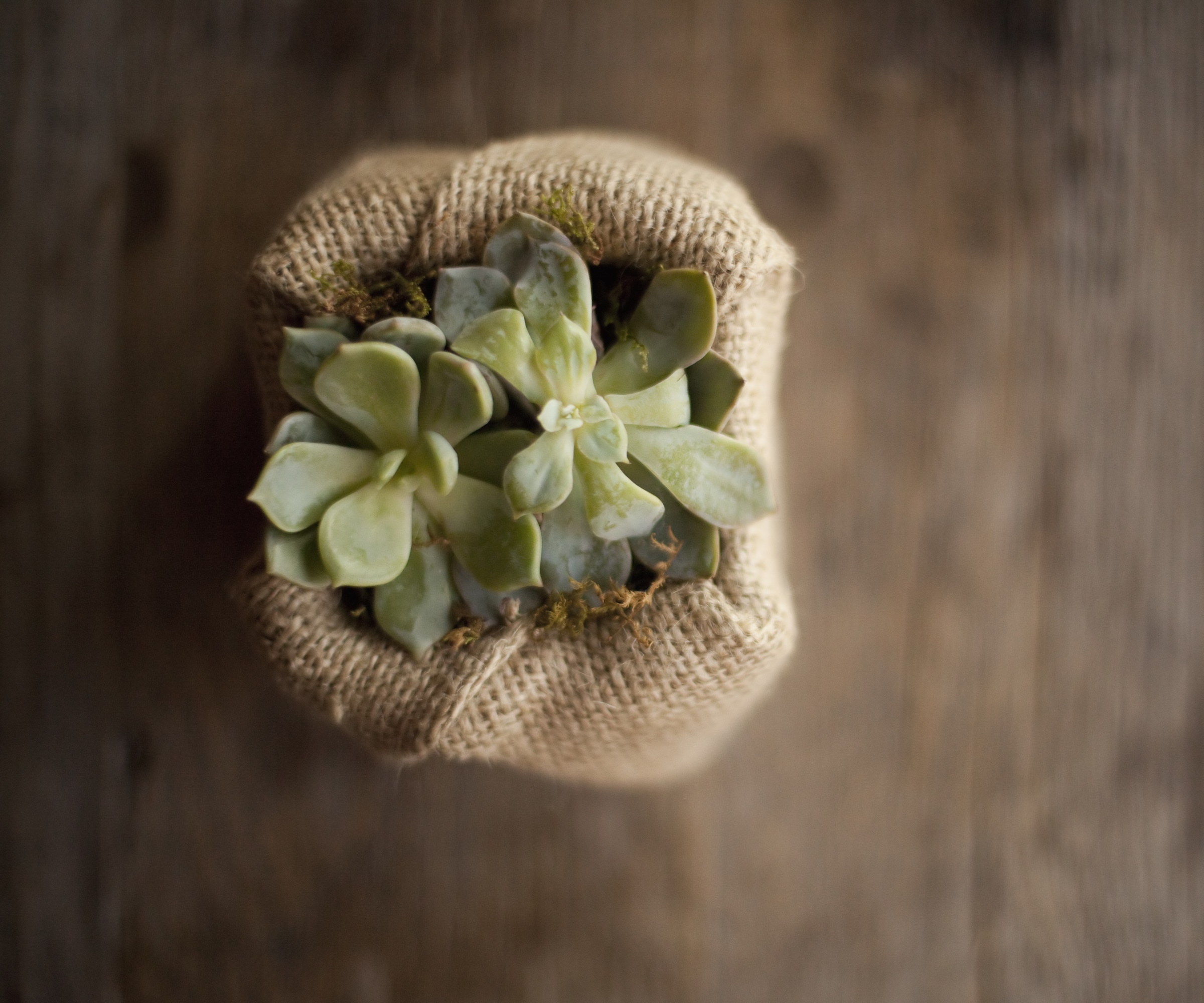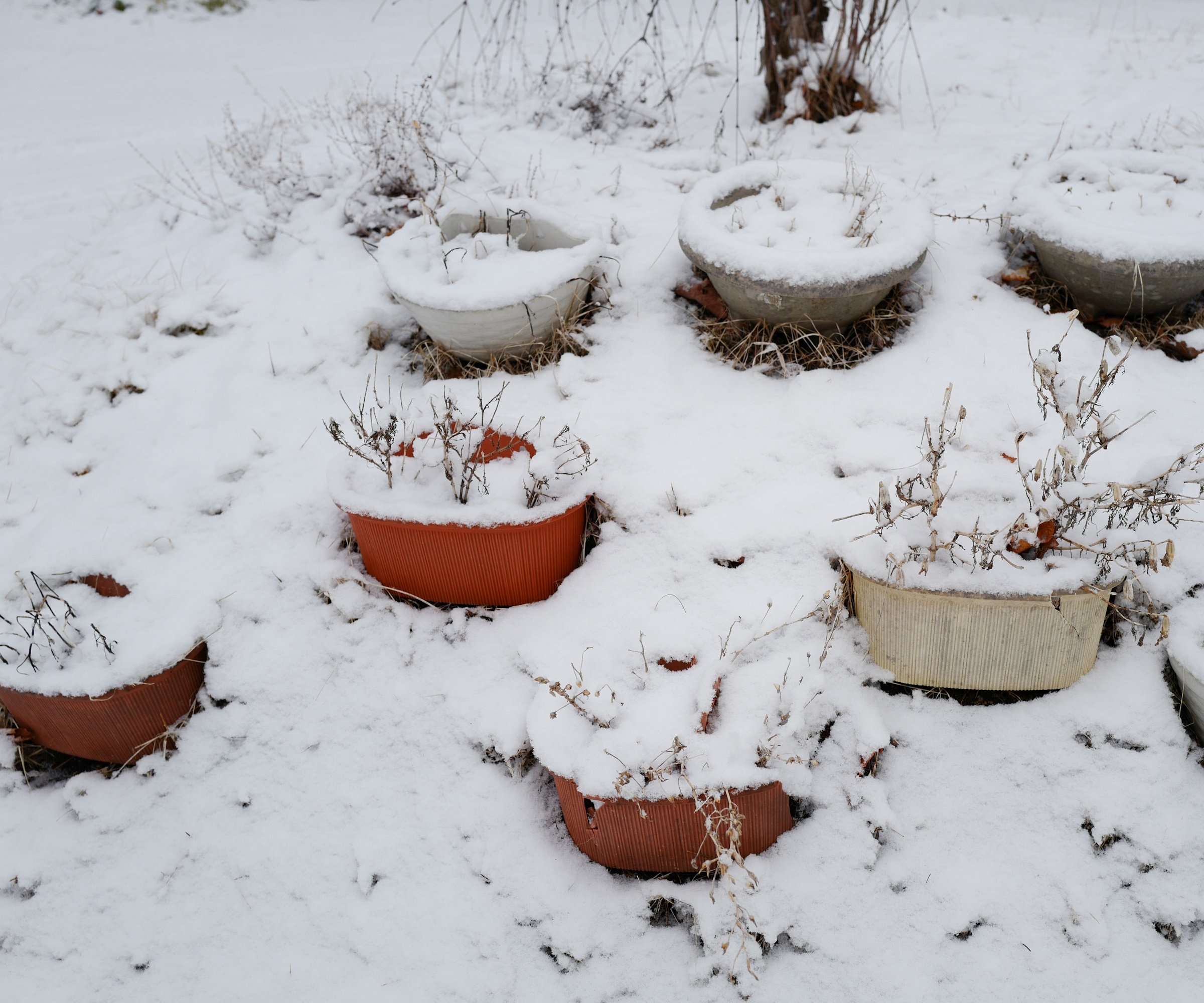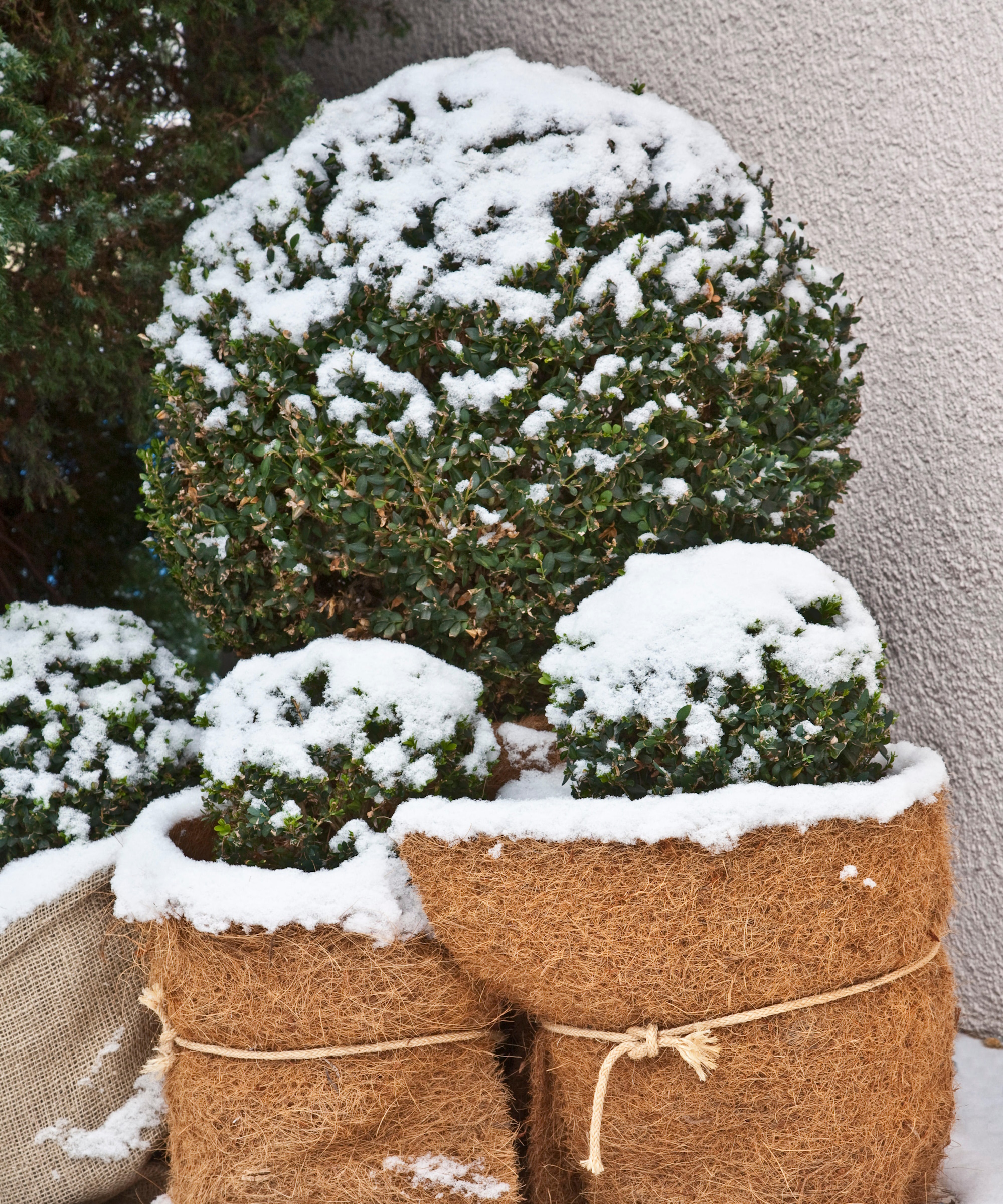How to wrap potted plants for winter – and keep them warm in frost and snow
An extra layer of winter insulation can make all the difference to your outdoor potted plant's chance of survival


Winter weather can be harsh for so many reasons, causing our outdoor plants to experience cell-freeze, cracking containers, and an array of other ailments.
But wrapping the pots of our outdoor plants in a insulating layer can make all the difference, protecting container plants from the full brunt of the winter cold and preventing your plant's soil from repeatedly freezing.
To correctly wrap up your potted plants for winter, you will only need a few materials, as well as this advice we gathered from plant experts. If you follow this guide as a part of overwintering a garden, your outdoor potted greenery will have the best chance of survival.
1. Choose the right material

The first thing you need to do when wrapping up potted plants for winter is take time to choose the correct material for the job.
It may not seem important at first as surely any form of insulation in the winter is better than none, but unless you're growing frost-hardy perennials, the material you choose actually matters a lot, with the wrong choices encouraging mold or inadequate heat retention around your plant.
Ofra Gaito, CEO of plant company Verdant Lyfe, says, 'To maintain warmth and prevent mold buildup, you'll need materials that insulate while also ensuring proper air circulation. Some typical materials are:
- Burlap as it's a breathable fabric that protects against wind and frost.
- Bubble wrap provides insulation but is not breathable, so it should be used with caution.
- Fleece plant covers or garden fabric designed to protect plants from cold without restricting airflow.
- Recycled plastic or plastic tarps can be used to protect against moisture and frost, but be careful not to cover the plant completely as it'll leave it without ventilation.'
From Ofra's recommendations, using burlap or garden fabric specifically designed for wrapping outdoor plant pots are the safest choices. The 40" x 30" feet gardening burlap roll from Amazon and the OAHAO horticultural fleece plant covers, also from Amazon are both great for the job.
Design expertise in your inbox – from inspiring decorating ideas and beautiful celebrity homes to practical gardening advice and shopping round-ups.
2. Prep your potted plant

Next, it's important to prepare your plant and plant's pot to be wrapped. Wiping down the pot's surface to free it from debris, frost or snow, giving the plant a good water and placing the planter on an elevated surface are the three pillars to successful preparation when you're not overwintering plants indoors.
'Taking your container garden plant pots off of the ground by lifting it onto wooden blocks, bricks or a pot stand will help to protect the plant's roots from freezing as they won't be in direct contact with the cold soil,' says Ofra. 'Giving your plant a good watering at this stage, too, is beneficial as damp soil retains warmth more effectively, helping to shield the roots from the cold.'
Be mindful not to overwater your plant though, as this can lead to root rot. Using a gadget like the XLUX soil moisture meter from Amazon will always inform you when your plant is adequately hydrated.

In 2020 Ofra Gaito founded Verdant Lyfe, an e-commerce company born to help and share live plants with both plant lovers and new plant beginners. The company packs and ships hundreds of orders every week to homes and businesses all over the USA. At the head office in South Florida, Ofra and her team conduct workshops every six weeks that involve the plant world. Ofra hosts live radio program Grow Your Lyfe every Friday at 1:45 pm EST on 101.9FM Omega radio.
3. Measure your wrapping material

Now your potted plant is ready to be wrapped. It may be tempting to add layer upon layer of insulation, especially if your plant isn't one of the best winter plants for pots, but less is actually more when it comes to keeping your plant safe over the winter.
Paul LeBlanc, owner of Bloomist, says, 'Overwrapping is a common misstep that can trap moisture, leading to mold or rot, especially if the fabrics used aren't breathable.'
Take your roll of fabric or frost cloth and wrap it around your plant enough that it goes exactly around the pot's circumference once, plus a few extra inches so the edges overlap well. Then, remove the fabric to cut off using a pair of fabric cutting scissors like the fiskars 8" adult titanium scissors from Walmart. If it helps, you can mark where you need to cut your fabric using a piece of chalk. If your length of fabric doesn't cover the entire height of your outdoor plant pot, cut another measure of fabric that will cover the gap.
Once you have these pieces, cut one more piece to go over the bottom of your plant's pot. The easiest way to do this is to sit your plant pot on your fabric and cut around a shape with six or more inches added onto the circumference (for instance, a large circle). This extra fabric is what will be used to secure the insulation to your plant pot.
4. Secure your wrapping material

Lastly, you can secure your fabric pieces around your outdoor pots to protect plants from frost and, for extra insulation, pack a layer of mulch such as wood chips around the base of the pot. There are many different ways to secure your wrapping and mulch safely, but whichever method you use, remember it must be strong enough to withstand snow and wind.
'Wind can quickly unravel even the best wrapping job,' says Paul. 'Anchor the materials with twine, clips, or a decorative cord, so they’re snug but not overly tight, which could restrict airflow.'
I like this pack of gardening twine available on Amazon as it brings a pop of color into this project without straying too far from nature's hues. It's also available in white. The Binckin small bungee cords, also from Amazon, are ideal if you're wrapping lots of plants.
If you're struggling to secure your wrapping fabric alone, we recommend asking for help so one person can hold the wrap in place and the other can tie twine or cords around the material to keep everything in place.
Ofra recommends where possible keeping your pot's drainage holes free as well, or using a pair of scissors to open them up to prevent soil from becoming waterlogged.

Paul LeBlanc owns Bloomist, a purveyor of sustainable, nature-inspired garden accessories and home decor. Celebrated for timeless design and exceptional craftsmanship, Bloomist curates hand-thrown pots, live plants, artisan-crafted accents, and garden essentials, all crafted to deepen connections with the natural world.
Winter doesn't have to be a time of scarcity in your garden, as there are many plants out there perfectly suited towards winter garden ideas. For instance, these 7 frost-hardy plants will put on a show even through cold winters.

Ciéra is a writer and regional laureate with particular passions for art, design, philosophy and poetry. As well as contributing to Homes & Gardens, she's an Editorial Assistant for Design Anthology UK and a contributing writer for magazines including Livingetc, Apartment Therapy, House Beautiful and Ideal Home. Previous commendations of hers include being Highly Commended by The Royal Society of Literature and receiving a prestigious MA Magazine Journalism scholarship to City, University of London.